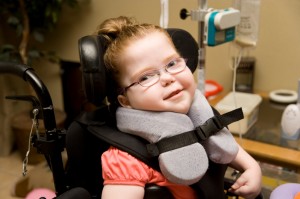Quadriplegia & Cerebral Palsy
Quadriplegia (AKA tetraplegia) is a symptom of some forms of cerebral palsy in which all four limbs are affected. It is usually accompanied by more-severe symptoms of nerve damage interfering with normal muscle movement than the other types.
The terms “pentaplegia” or “total body involvement” are used in cases where the head and neck are also affected. Patients with full body involvement may have additional complications. Eating and breathing can be affected by the lack of muscle control or the inability of muscles to work together in the normal patterns or rhythms of tightening and relaxing.
Sometimes, severe diplegia is mistaken for quadriplegia because it is not unusual for the arms of a child with diplegia to be somewhat affected as well. There can be disagreement—even among specialists—about the proper diagnosis because some symptoms may overlap.
Quadriplegia vs Quadriparesis
While quadriplegia generally refers to the partial or total loss of use of all four limbs, those with “muscle weakness” suffer from what’s known as quadripareses (AKA tetraparesis). Children with quadriparesis may be able to walk for a short distance using a walker, can lift themselves into a wheelchair or assist in the transfer, and may have sufficient hand control to feed themselves.
On the other hand, children with quadriplegia may not be able to walk even with a walker or other form of assistance, cannot move independently into a wheelchair, will have difficulty sitting, and usually are not capable of feeding themselves.
Because a child with quadriplegic CP may have difficulties with eating, proper nutrition is very important to ensure healthy growth of tissue throughout the body. If the child is not growing properly, the brain is probably also not getting what it needs for growth and development.

